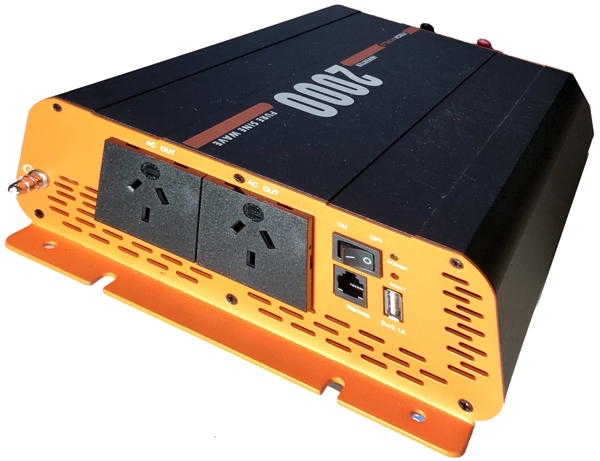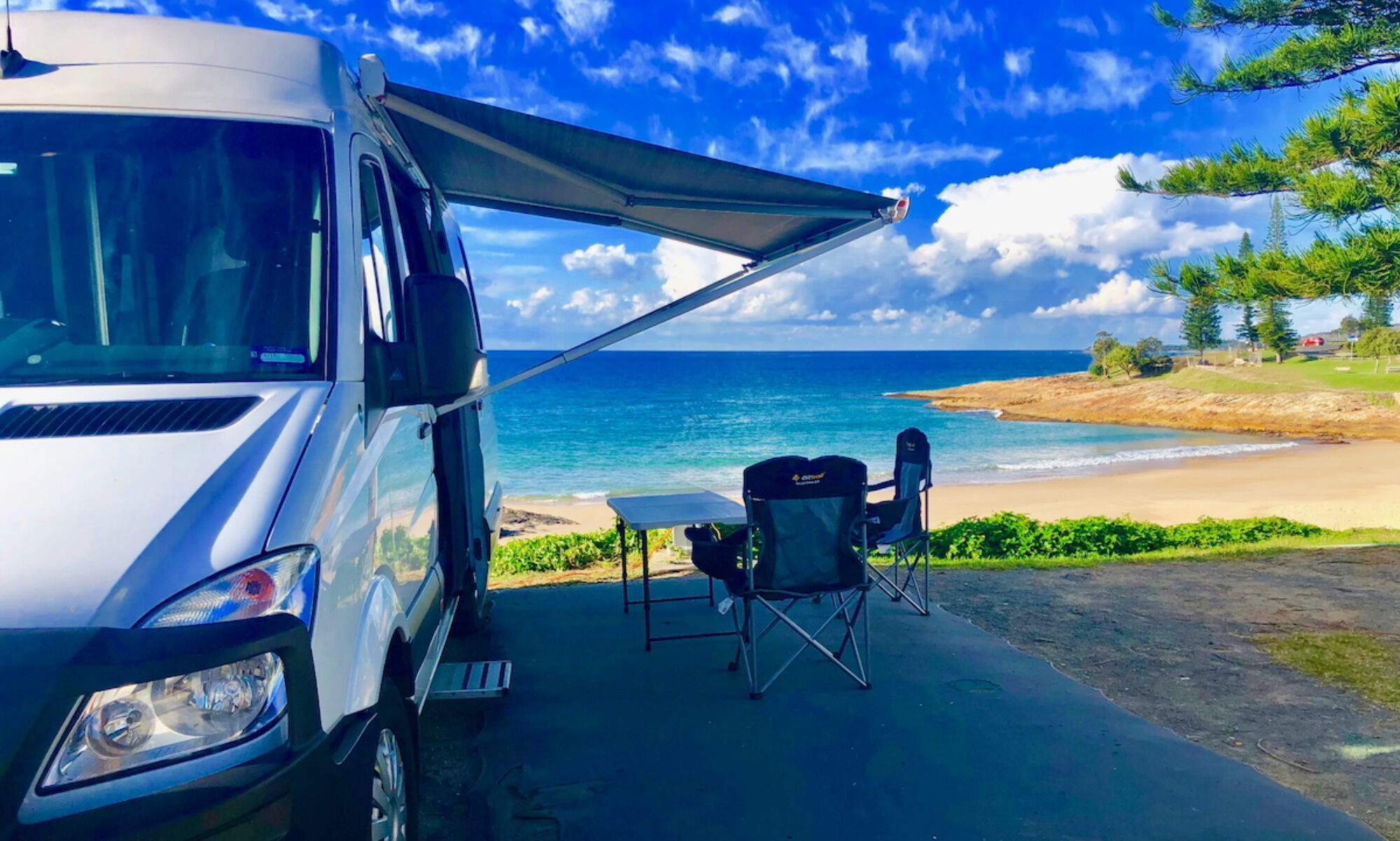Back in the day
 Not so long ago people were happy running their basic camping kit from a 12V battery or an LPG bottle. Inverters were clunky old boxes that were used by those working away from a mains power source, firing up the angle grinder to repair the hinge on the gate in the bottom paddock.
Not so long ago people were happy running their basic camping kit from a 12V battery or an LPG bottle. Inverters were clunky old boxes that were used by those working away from a mains power source, firing up the angle grinder to repair the hinge on the gate in the bottom paddock.
Fast forward to the present, and inverter technology has improved to the point where these devices are well and truly accepted in the ‘mainstream’. It seems that every Campervan, Mobilehome or Caravan is equipped with a sleek high-power inverter used to run modern domestic appliances from their 12V battery.
What is an Inverter?
An inverter is an electronic device that ‘converts’ (or rather ‘inverts’) electrical current from 12V DC to 230V AC. This provides the option of running regular mains-powered household appliances from your 12V batteries.

The first appliances I saw driving the take up of inverters in mobile homes were kettles and coffee machines. Then it spread to toasters, sandwich presses, microwave ovens and, more recently, induction cooktops.
Running a 230V appliance from your 12V battery sounds like magic, and it is certainly very clever technology. But there are limitations – most importantly the capacity of your batteries (and cabling infrastructure) to supply the continuous high current required to run 230V AC appliances through the inverter.
Is your battery up to the task?
Domestic 230V appliances draw a lot more electrical current when running from a 12V battery (through an inverter) than they do when connected directly to a 230V AC mains power supply.
For example, a small 230V AC toaster (two slice, 750W), draws around 3 amps of current when connected to a domestic mains supply, but when the same toaster is connected to an inverter it is pulling 70 amps from your 12V batteries – and this heavy current is also moving through the cables connecting your inverter to the batteries.

As a general rule of thumb, check the power rating of your appliances (in Watts), divide that number by 10, and compare that to the continuous current discharge rating of your battery/s (in Amps).

I would suggest that for most high power inverters (over 500W) Lithium batteries are essential, along with a robust solar re-charging facility of at least 150W.
What size inverter?
 Two things to consider here:
Two things to consider here:
-
- Current ‘wave form’ output;
- Power rating.
Wave form: The only inverter to buy for running modern domestic appliances is what is known as a Pure Sine Wave inverter. These devices produce a ‘smooth’ current similar to your domestic power supply, and won’t damage modern electronic equipment. (Older inverters produced a ‘chunky’ Modified Sine Wave.)
Power rating: Your inverter needs to have a power rating higher that the most power-hungry 230V AC device that you will connecting to it.
If you are considering using an induction cooktop, drawing 1800W, your inverter will need to be able to supply at least 2000W. However, if your needs are more modest, running say a laptop computer (50W), or chargers for cameras or an electric shaver, then a 300W – 500W inverter will do the job.
In a nutshell: In my humble opinion, if you are planning on running regular domestic kitchen appliances, you will need a 1500W – 2000W pure sine wave inverter.
As mentioned above, such decisions will also be informed by your battery capacity, and your battery re-charging facilities. A 2000W inverter pulling 1800W will need two quality Lithium batteries, each with the capacity for 100A continuous current discharge, connected in parallel.
So, do your really need an inverter?
 Inverters are no doubt the latest must-have gadget to transform camping into glamping. They enable access to a plethora of 230V household appliances that bring domestic convenience to the off-grid campsite.
Inverters are no doubt the latest must-have gadget to transform camping into glamping. They enable access to a plethora of 230V household appliances that bring domestic convenience to the off-grid campsite.
But on another level, inverters also open the door to transforming your energy needs to just one renewable energy source – 12V electricity.
Lithium batteries and solar panels are gradually making it possible to replace LPG as an energy source in mobile homes. It is still relatively early days, but as battery, solar panel and inverter technology improves, and the cost of this equipment decreases, the all-electric Campervan or Motorhome will likely become the norm. We are not there yet, but certainly heading in that direction.
In the meantime, more conventional (and affordable) appliances, such as an LPG cooktop, will cook your food just as well as an induction cooktop connected to the latest inverter and Lithium batteries.
More info?
This post is a brief summary of our inverter experience. For more detailed information about choosing and installing an inverter, check out this article:
